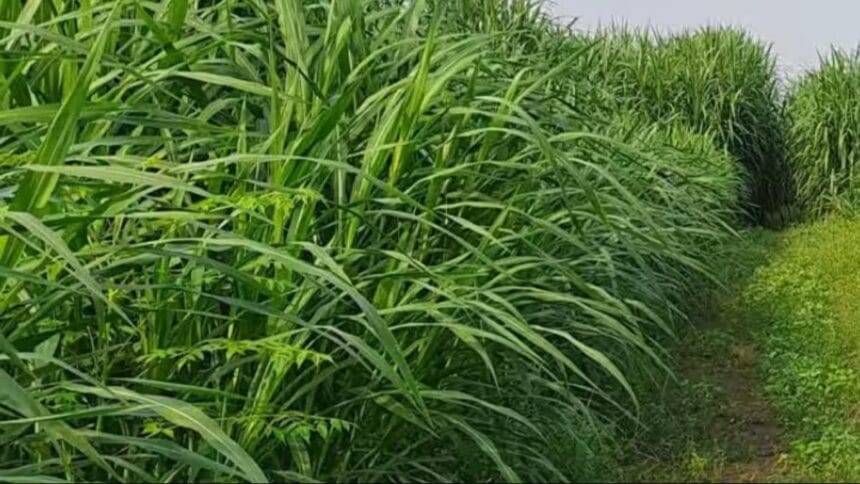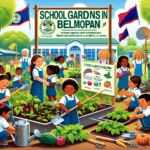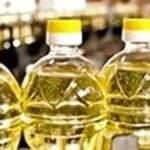Main Points In Hindi (मुख्य बातें – हिंदी में)
यहां कुछ मुख्य बिंदु दिए गए हैं:
-
फॉडर की कमी: पशुपालन में गर्मियों के दौरान हरी चारा की कमी की धारणा के विपरीत, अब सर्दी और बारिश के मौसम में भी पशुओं को पर्याप्त हरी चारा नहीं मिल रहा है, जिससे देश में हरी और सूखी चारा की कमी महसूस की जा रही है।
-
फायदा करने की तकनीक: अत्यधिक हरी चारा को भंडारित करने के लिए ‘हे’ बनाने की तकनीक सहायक है। यह तकनीक अक्टूबर में लगाए गए फसलों से हरी चारा को इकट्ठा करके भंडारण करने की अनुमति देती है।
-
‘हे’ बनाने की प्रक्रिया: फसलों को फूलने के प्रारंभिक चरण में काटना सबसे अच्छा होता है। फसल को सुबह के समय काटना चाहिए, जब ओस सूख जाए, और 15-20% नमी पर सूखे फसल को एकत्रित करना चाहिए।
-
फीड ब्लॉक का निर्माण: सूखी चारा, चाफ, और सूखे पत्तों का उपयोग करके फीड ब्लॉक बनाए जा सकते हैं। इन ब्लॉकों का आकार छोटा होता है, जिससे इन्हें स्टोर करना और स्थानांतरित करना आसान होता है।
- पशुओं के लिए पोषण: उचित मात्रा में सूखे चारे और फीड ब्लॉक देने से पशुओं को अधिक रुचि होती है और इनके पोषण मूल्य में भी वृद्धि होती है।
Main Points In English(मुख्य बातें – अंग्रेज़ी में)
Here are the main points from the text:


-
Shortage of Fodder: There is a growing concern in animal husbandry about the shortage of green and dry fodder for animals, not just in summer but also during winter and the rainy season.
-
Hay Preparation: The technique of making hay is essential for utilizing excess green fodder. Experts suggest that hay can be prepared from October-grown crops and that March-April is traditionally associated with hay preparation in North India.
-
Optimal Harvesting Practices: The quality of hay is heavily influenced by the stage of harvesting, which should ideally be done during the initial flowering stage. Overripe crops lead to a reduction in nutritional value, while timely harvesting helps preserve protein and carotene.
-
Storage Considerations: Proper methods for drying and storing hay are crucial to maintain its nutritional value, as excessive drying can cause nutrient loss and improper storage can lead to heat buildup.
- Feed Block Production: To address storage issues, feed blocks can be made by compacting dry fodder, chaff, and other ingredients under high pressure, allowing for efficient space-saving and easy transportation while ensuring the animals consume them enthusiastically.
Complete News In Hindi(पूरी खबर – हिंदी में)
पशुपालन में माना जाता है कि गर्मियों में जानवरों के लिए हरी चारा की कमी होती है। लेकिन अब पशुपालन क्षेत्र में स्थिति यह है कि जानवरों को सर्दी और बरसात के मौसम में भी पर्याप्त हरी चारा नहीं मिल पाती है। चारे के विशेषज्ञों के अनुसार, देश में हरी और सूखी चारे की कमी है। लेकिन कई बार ऐसे मौके आते हैं जब हरी चारा भरपूर होती है। फिर भी जानवरों को हमेशा हरी चारा नहीं दी जा सकती। ऐसे में घास बनाने की तकनीक काम आती है।
इस तकनीक की मदद से अतिरिक्त हरी चारा से घास बनाई जा सकती है और इसे स्टोर किया जा सकता है। खास बात यह है कि अक्टूबर में उगाई गई फसलों से हरी चारा तैयार की जा सकती है और इसे जानवरों के लिए संग्रहित किया जा सकता है। हालांकि, उत्तरी भारत में ‘घास’ बनाने का समय मार्च-अप्रैल होता है। लेकिन विशेषज्ञों के अनुसार, कुछ फसलों से अक्टूबर में भी ‘घास’ बनाई जा सकती है।
और पढ़ें: ग्लैंडर्स: घोड़ों, गधों और खच्चरों के आंदोलन पर बैन, जानें किस राज्य ने लिया निर्णय
घर पर ‘घास’ कैसे बनाएं
चारा विशेषज्ञों का कहना है कि जैसे ही पौधों की पत्तियाँ छोटी ढेरों में सूख जाती हैं लेकिन मुड़ने पर टूटती नहीं हैं, ऐसे ढेरों को पलटा जाना चाहिए। चारे के ढेरों को ढीला रखा जाता है ताकि हवा उनमें से गुजर सके। ढेरों को 15 से 20 प्रतिशत नमी तक सूखने दिया जाता है और बाद में इन्हें इकट्ठा किया जाता है। अगर फसल की कटाई के तुरंत बाद इसे कोठरी, गोदाम या शेड में नहीं रखा जा सकता तो इसे संग्रहित किया जाता है। अच्छे घास बारसीम, रिजका, चने, सोयाबीन, ओट्स, सुदान आदि से बनाईं जाती हैं। अक्टूबर में मक्का और जौ से भी घास बनाई जा सकती है। पतली नरम तनों वाली घास की घास कठोर घास से बेहतर होती है।
इस समय फसलें ‘घास’ के लिए काटी जा सकती हैं
विशेषज्ञों का कहना है कि फसलों की कटाई का समय घास की गुणवत्ता पर बहुत प्रभाव डालता है। आमतौर पर, ‘घास’ बनाने के लिए कटाई फूल आने के शुरुआती चरण में की जानी चाहिए। अधिक पकी हुई फसलों से बनाई गई घास अच्छी नहीं होती। जब फसल अधिक पक जाती है, तो तनों में प्रोटीन, कैल्शियम, फास्फोरस और पोटाश की मात्रा कम हो जाती है। कटाई की प्रक्रिया तेजी से होनी चाहिए। फसल को सुबह 8-10 बजे के बाद ही काटा जाना चाहिए जब ओस सूख गई हो। फसलों का अत्यधिक सूखना प्रोटीन और कैरोटीन तत्वों की हानि करता है। जबकि कम सूखने से संग्रहण के दौरान गर्मी उत्पन्न होती है, जिससे इसके पोषण मूल्य में कमी आती है।
और पढ़ें: मदर डेयरी और उत्तराखंड ने गिर-बद्री गाय के दूध से बनी घी और ट्रेसबिलिटी सिस्टम लॉन्च किया।
घर पर फीड ब्लॉक भी बनाए जा सकते हैं
फीड ब्लॉक बनाने की विधि यह है कि खेत में उपलब्ध सूखी चारा, चक्की, सूखी पत्तियाँ आदि को संरक्षित और संग्रहित किया जा सकता है, लेकिन सूखी चारा और चक्की का बहुत स्थान占 करती हैं। इसलिए भंडारण की समस्या उत्पन्न होती है। इस समस्या का समाधान करने के लिए, सूखी चारा और पत्तियों को जैसे हैं, मिश्रित करके या चोकर, खनिज मिश्रण, गुड़ आदि मिलाकर, चारा ब्लॉक बनाए जाते हैं। मशीन के माध्यम से उच्च दबाव उत्पन्न करके आकार में छोटे किया जाता है। इन्हें छोटे स्थान में संग्रहित किया जा सकता है और इन्हें आसानी से स्थानांतरित भी किया जा सकता है। जानवर इस तरह संरक्षित चारे को बड़ी रुचि से खाते हैं।
Complete News In English(पूरी खबर – अंग्रेज़ी में)
In animal husbandry, it is believed that there is a shortage of green fodder for the animals in summer. But now the situation has become such in the animal husbandry sector that animals are not able to get sufficient green fodder even in winter and rainy season. According to fodder experts, there is shortage of green and dry fodder in the country. But many times such occasions come when green fodder is available in abundance. But animals cannot be fed green fodder all the time. In such a situation, the technique of making hay comes in handy.
With the help of this technology, hay from extra green fodder can be prepared and stored. And the special thing is that green fodder obtained from crops grown in October can be prepared and stored for animals. However, in North India the time for preparing ‘hay’ is in March-April. But according to experts, ‘hay’ can be prepared from some crops even in October.
Also read: Glanders: Ban imposed on movement of horses, donkeys and mules, know which state took the decision
This is how you can prepare ‘Hey’ at home
Feed experts say that as soon as the leaves of plants in small heaps dry up but do not break when bent, such heaps should be turned over. The heaps of fodder are kept loose, so that air can pass through it. The heaps are dried to 15 to 20 percent moisture and later collected and if they are not available in shed, warehouse or shed immediately after harvesting, they are stored. Good hay is prepared from Barseem, Rizka, Cowpea, Soybean, Oats, Sudan etc. Hay can also be prepared from maize and sorghum in October. Hay of grasses with thin soft stems and more leaves is better than hard grasses.
Crops can be harvested for ‘hay’ at this time
Experts say that the stage of harvesting of crops has a great impact on the quality of hay. Generally, harvesting to make ‘hay’ should be done at the beginning of flowering stage. Hay prepared from overripe crops is not good. When overripe, the amount of protein, calcium, phosphorus and potash reduces in the stems. The harvesting process should be done rapidly. The crop should be harvested only after 8-10 am in the morning when the dew has gone. Excessive drying of fodder causes loss of protein and carotene elements. Whereas less drying produces heat during storage. Due to which its nutritional value reduces.
Also read: Mother Dairy and Uttarakhand launched ghee made from Gir-Badri cow milk and traceability system.
Feed blocks can also be made at home
The method of making feed block is that dry fodder, chaff, dry leaves etc. available in the farm can be preserved and stored, but dry fodder and chaff occupy a lot of space. Therefore the problem of storage arises. To deal with this problem, chaff. By mixing dry fodder and leaves as is or by mixing bran, mineral mixture, molasses etc., fodder blocks are made by creating high pressure through a machine which become smaller in size. These can be preserved in small space and can also be shifted easily. Animals eat the fodder preserved in this way with great interest.










